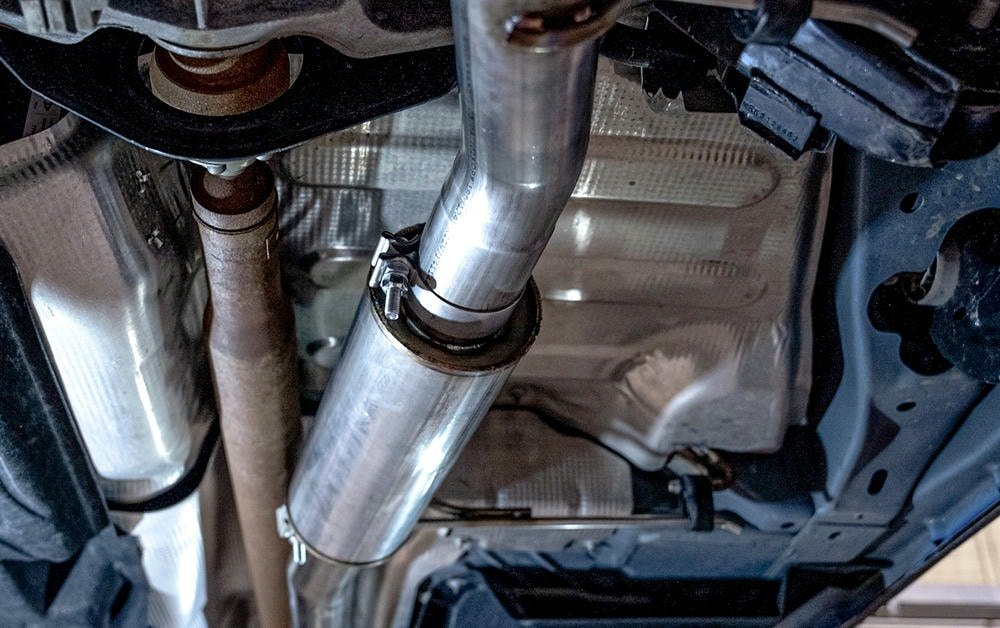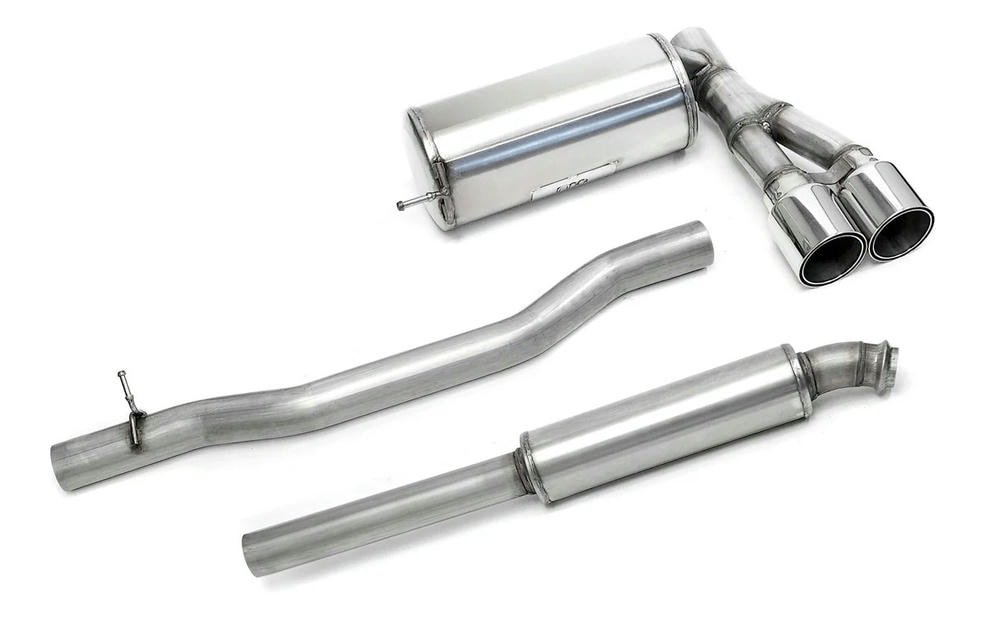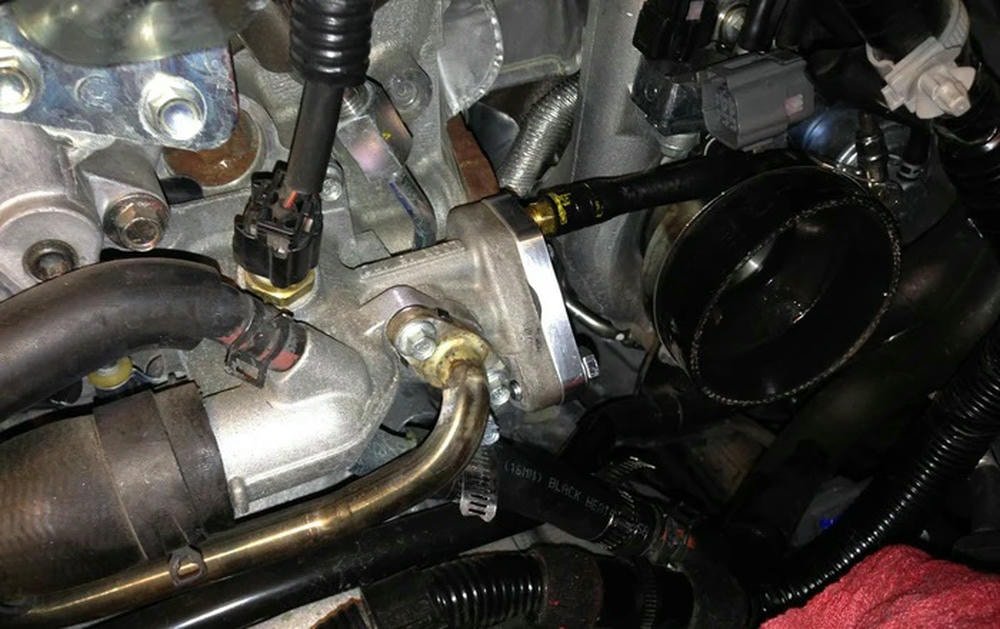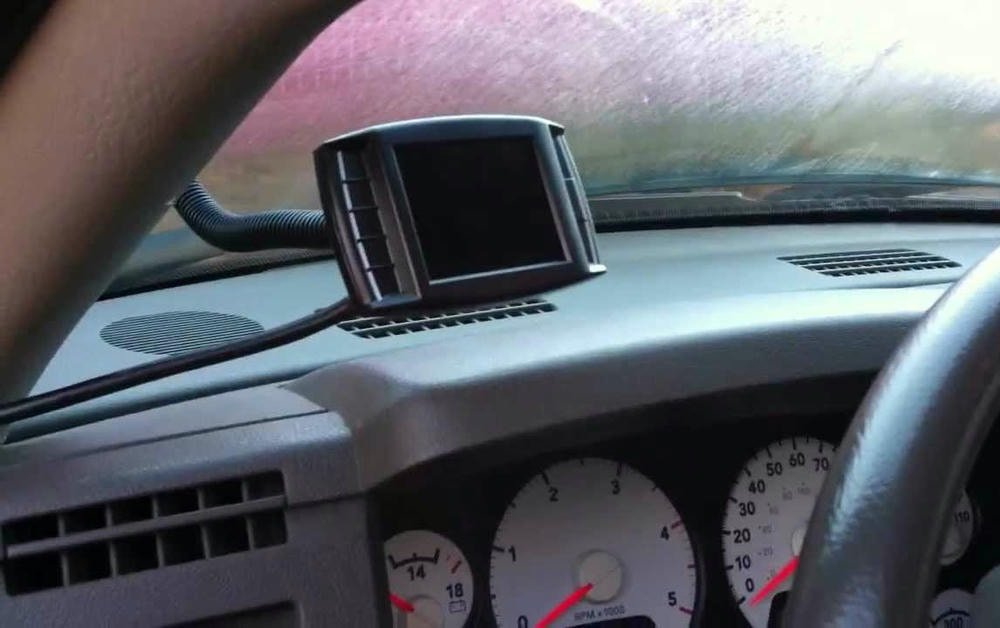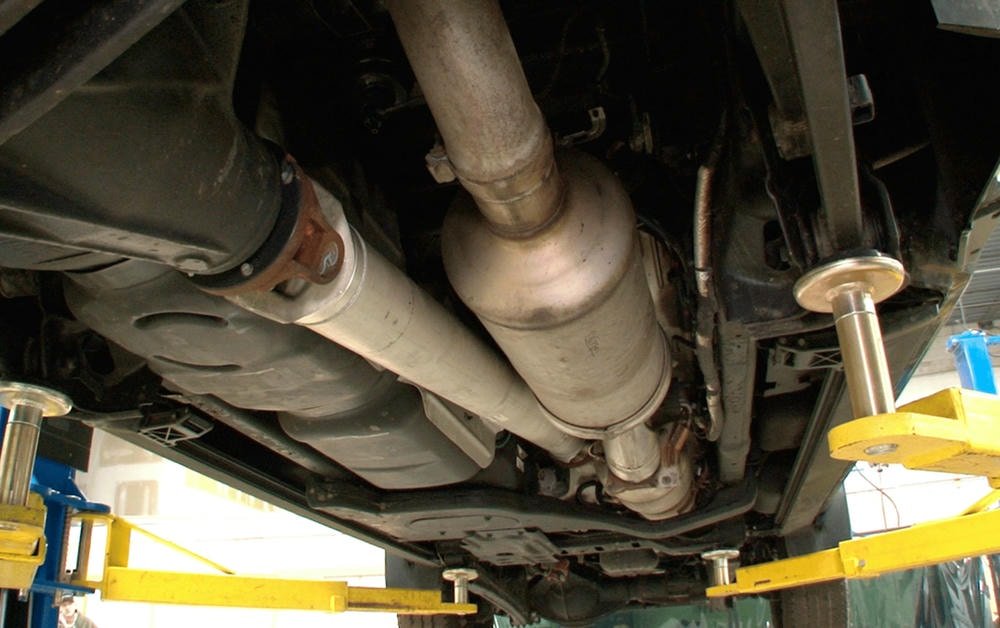Instalacja cold air intake system in a diesel truck helps it run better. This system brings cooler air into the engine, which can make the truck more powerful and efficient. To do this job, one needs tools like screwdrivers, wrenches, pliers, and sometimes a drill.
It’s also important to be safe. Wearing gloves and goggles is wise. Plus, the engine should be cool and off before starting work.
First steps include taking off old parts carefully then putting in the new filter, attaching tubes for air flow, making sure heat shields are in place securely, and double-checking that everything fits well together.
After installing it’s key to test how the truck runs with the new system. Listen for any strange sounds that might mean there’s a leak or something isn’t tight enough. Watching how your truck performs over time can also show if there are changes due to the new intake.
This guide will walk readers through each step clearly so they know exactly what to do next. Let’s get started.
Spis treści
TogglePrzygotowanie do instalacji
Getting ready to put in a cold air intake system starts with gathering a few tools and materials. One needs basic hand tools, like wrenches and screwdrivers, safety gear such as gloves and goggles, and of course, the new intake kit.
Making sure the vehicle is cool and stable is key before starting any work.
Wymagane narzędzia i materiały
To install a cold air intake system in a diesel truck, owners require the appropriate tools and materials. This contributes to a streamlined process and aids in preventing potential issues.
- Screwdrivers: Both flat-head and Phillips are vital. These aid in removing screws on the established air intake and fastening new components.
- Zestaw kluczy: Required for loosening and tightening bolts throughout the installation process.
- Pliers: Standard and needle-nose pliers assist with the removal of clamps and the securing of wire ties.
- Wire cutter: Serves to cut wire ties or any necessary wiring for sensor installation.
- Zestaw grzechotek i nasadek: Facilitates the removal of bolts and nuts situated in difficult-to-access areas.
- Klucz dynamometryczny: Guarantees the accurate tightening of bolts following specified standards, thus avoiding damage.
- Drill (optional): Some installations might require the drilling of holes for brackets or supports.
- Trim panel removal tools: These are essential to avoid damage during the removal process of engine bay panels or covers.
- Silicone lubricant: Contributes to easier assembly of parts, especially when sliding rubber hoses onto fittings.
- T20 Torx driver: Particular for vehicles that utilize Torx screws instead of typical ones.
- Heat gun (optional): Can assist in accommodating tight sleeves or insulating wires near hot zones.
- Airflow sensor cleaner: Effectively cleans mass airflow sensors without causing damage, crucial for upkeeping performance post-installation.
Equipped with these tools and materials, diesel truck owners can effectively install a cold air intake system, enhancing airflow to their engines and boosting overall performance. This active involvement is beneficial in upgrading their vehicle and also broadening their practical skills in engine modification.
Środki ostrożności
Safety comes first in any DIY engine mod, particularly when installing a cold air intake system in a diesel truck. Owners must wear okulary ochronne to keep eyes safe from dirt and debris.
Gloves are also important to protect hands from sharp edges under the hood. The ciężarówka z silnikiem wysokoprężnym should be off and cool before starting the work to avoid burns.
Always disconnect the battery before beginning any modifications to your vehicle.
This ensures the vehicle’s electrical system is safe while you work near the mass air flow sensor and throttle body. Keeping a gaśnica nearby is wise, especially when handling flammable materials or working close to fuel lines during an airflow optimization project or custom intake installation.
Following these safety steps helps ensure a smooth and harm-free installation process.
Vehicle Preparation and Initial Steps
Instalacja DIY cold air intake system boosts osiągi silnika. This guide helps diesel truck owners prepare their vehicle for installation.
- Gather required tools and materials. You need a basic toolkit, which should include screwdrivers, pliers, and a wrench set. Also, have the new cold air intake kit ready.
- Park the truck on a flat surface. Ensure it’s in a dobrze wentylowany obszar to avoid inhaling fumes.
- Turn off the engine and disconnect the battery. This prevents any electrical accidents while working.
- Niech chłodzenie silnika before starting. Working on a hot engine can cause burns or other injuries.
- Remove any items that might block access to the stock air intake system. Sometimes, parts like engine covers or braces need moving.
- Inspect the workspace for hazards. Keep tools organized and out of the way to prevent tripping.
- Plan by reviewing installation instructions from the cold air intake setup guide. Knowing steps beforehand makes the process smoother.
Following these steps ensures safety and sets up diesel truck owners for successful DIY cold air intake installation.
Proces instalacji krok po kroku
Installing a cold air intake system starts with taking out the old parts and putting in new pieces to improve your truck’s engine. Follow clear steps to remove the stock setup, fit a new filter, attach the tube, place a heat shield, and make final tweaks to boost performance.
Removing the Stock Air Intake System
First, turn off the diesel truck and make sure it’s cool. This avoids burns or other injuries. Use a wrench to loosen bolts holding the stock air intake in place. A socket set helps remove these parts quickly.
Pull out the factory air intake carefully to avoid damaging nearby parts like the EVAP canister.
Next, disconnect any sensors connected to the old system. These might include airflow meters or temperature sensors. Keep all screws and clips safe; you’ll need them later for the new cold air intake setup.
Taking your time during removal prevents mistakes and future problems.
Installing the New Air Filter
Take out the old air filter from its place. Make sure to clear any debris or dirt off where the new cold air intake filter will go. This helps keep the diesel truck’s engine clean and running smoothly.
Next, grab the new cold air intake filter designed for performance enhancement. Align it correctly with the housing or mount meant for it in your vehicle.
Push the new filter into place gently but firmly until it is securely fitted. It should not move around if installed right. This step is crucial for ensuring that your diesel truck benefits fully from the turbocharged engine setup improvement.
Tightening any clamps or screws comes next to make sure nothing comes loose when driving. After this, you have successfully installed a new air filter, vital for better osiągi silnika and efficiency.
Fitting the Intake Tube
Fitting the intake tube is a key step in cold air intake installation. First, connect the tube to the new air filter housing. Make sure all connections are tight and secure to avoid leaks.
Some systems come with clamps or rubber seals for a better fit. Use these tools to make sure everything connects well.
A diesel truck owner shared how they made sure the tube was perfectly aligned before tightening it down. They checked that there were no obstructions in the path of airflow. This simple check can make a big difference in performance.
Securing the Heat Shield
Once the truck owner has fitted the new air filter and intake tube, securing the heat shield is next. This step protects the cold air intake from engine heat, ensuring cooler air enters the engine for better performance.
First, place the heat shield in its designated spot near the engine block. Use bolts and a wrench to tighten it firmly in place. Make sure it stands secure without any wobble.
Check that all edges of the heat shield properly seal against surrounding components to block out hot air. Sometimes, foam strips or rubber gaskets are used for a tighter fit. These materials help prevent hot engine air from mixing with the cool air meant for combustion.
Once secure, this setup helps maintain optimal temperature balance within silniki wysokoprężne, boosting efficiency and power output.
Final Adjustments and Checks
After installing the cold air intake system, diesel truck owners need to make final adjustments and checks. They should start by ensuring all clamps are tight and secure to prevent leaks.
Next, they must check that the new setup does not interfere with any moving parts in the engine bay such as belts or pulleys. Owners should also ensure there is a clear path for air to flow into the intake without obstruction.
A well-installed cold air intake can significantly improve performance.
Lastly, it’s crucial to test the throttle response and listen for any unusual sounds which might suggest a problem with the installation. If everything functions as expected, drivers will likely notice an improvement in engine response and efficiency.
This last step helps confirm that their diesel truck benefits from the installed performance intake setup, making it ready for use on the road.
Uwagi po instalacji
After installing a cold air intake, testing the system is key. This ensures everything works well and improves your truck’s engine performance. Watch for changes in how your diesel runs and be ready to solve any problems that come up.
Keep an eye on your engine after you fit a new intake to catch issues early.
Testing the System
Turning on the truck and giving it a test drive is key after installing a new cold air intake system. This checks that everything works as it should. Drivers listen for unusual noises, such as hissing or knocking, which could signal leaks or loose parts.
They monitor the engine’s response to acceleration and ensure the check engine light stays off.
Owners often use tools like a dynamometer (dyno) to measure their diesel truck’s performance gains accurately. This machine tests how much power and torque the engine makes after fitting the cold air intake setup.
By comparing these numbers to those before installation, owners can see just how much improvement they’ve achieved. Some even share their results on wikiHow or forums dedicated to diesel intake installations, helping others understand the benefits and potential of upgrades like ram-air intakes.
Monitoring Engine Performance
After installing a cold air intake system, diesel truck owners must keep an eye on osiągi silnika. This means watching how the truck runs and checking for any changes. A smooth-running engine is a good sign that everything is working right.
Owners can use tools like OBD2 scanners to read their truck’s data. This helps them see things like temperature and airflow.
One diesel truck owner shared that after adding a new air intake setup, he found his fuel economy went up by 5%. He kept track of this using an app linked to his OBD2 scanner. Monitoring allows for quick fixes if something goes wrong and helps in making sure the cold air intake fitting brings all its benefits without issues.
Addressing Common Installation Issues
Setting up a cold air intake system boosts engine functionality. There might be hiccups during the setup process.
- Confirm if there are any unsecured connections if the truck fails to start post-setup. This is usual and typically due to improper fastening of clamps or connectors during the setup of the intake system.
- Zwróć uwagę na abnormal sounds such as whistling or hissing, indicative of air leaks. Locating and sealing these leaks with appropriate tightening or added sealing usually resolves the issue.
- Watch out for any warning indicators on the dashboard, particularly related to the engine or airflow. This could be attributed to incorrect sensor positioning or an outright omission to connect them.
- In the event of the truck exhibiting subpar performance or inefficient fuel utilization, reverify if you’ve assembled all components correctly as per your DIY engine mods guide. Make sure no blockages exist in the newly installed components.
- Struggling to fit the fresh system in place could suggest you possess parts that are not suitable for your diesel truck model. Validate part compatibility prior to commencing your setup.
- Numerous owners overlook the necessity to change old filters when setting up new systems, resulting in subpar engine performance. Always switch filters as advised in your intake system setup guide.
- Encountering excessive vibrations following setup suggests parts are either not sufficiently tightened or misaligned—look back at each stage to ascertain every component is snug and aligned correctly.
- Occasionally, error codes might emerge since the car’s computer necessitates recalibration to accommodate changes in airflow from the fresh setup. Some vehicles may need a reset procedure or the application of a professional diagnostic tool.
All these points originate from situations diesel truck owners encounter while upgrading their engines with a cold air intake system. Addressing these frequent setup issues aids in ensuring that the enhancements will deliver the anticipated improvements without undesirable repercussions.
Wnioski
Installing a cold air intake system boosts your diesel truck’s performance. Experts like Dr. Alex Rivera, with 20 years in automotive engineering, back this up. He holds degrees from top tech schools and has developed car parts.
Dr. Rivera says the right installation makes engines run better. It brings more oxygen to burn fuel cleanly. This matches science showing better air flow increases power.
He notes the importance of doing it safely and following rules. Quality parts that meet standards are vital for safety and trust.
For daily use, he suggests checking connections often. Make sure it fits well with your vehicle’s needs.
Comparing this system to others shows its benefits but also points out limits like cost and fitting issues for some trucks.
Overall, Dr. Rivera sees value in these systems for those looking to improve their truck’s function within safe practice guidelines.
FAQs
What is a cold air intake system and why would I want to install one?
A cold air intake system allows your engine to take in more cool air, which can boost its performance. This installation guide will help you understand how to set it up correctly.
What tools do I need for installing a cold air intake system?
To install an air intake, you’ll need some basic installation tools such as wrenches, pliers, and screwdrivers. It’s important to have the right equipment on hand before starting.
Are there any safety precautions I should take when installing a cold air intake system?
Yes, always disconnect the battery before beginning work and be careful not to over-tighten screws or bolts as this could damage parts of the system.
Can you provide any tips for setting up my new cold air intake?
Sure! Take your time during installation and follow each step carefully from our setup guide. Also consider using visual aids like diagrams or videos if available; they can really help clarify complex steps.


